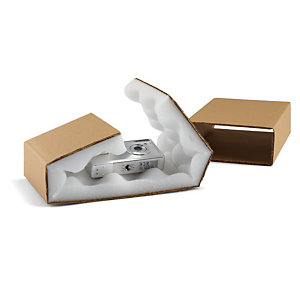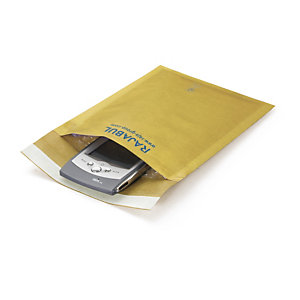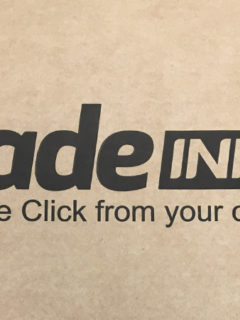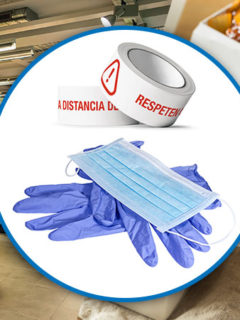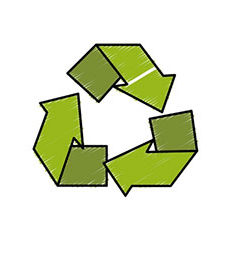Packaging filler plays a crucial role in the packaging of an e-commerce or shipping supplier’s products. If boxes, bags, pouches, envelopes and cases are used to hold the contents; and adhesive tapes, straps, glues and films are used to properly close the package, packing padding is used as a protective element for the goods.
The main function of packaging filler is to ensure that items arrive in good condition and are not damaged during the shipping and transport processes. This is possible because it has a triple effect:
- By suppressing voids, it prevents objects from shifting inside the packaging containing them due to movements resulting from transport.
- It absorbs shocks, impacts and vibrations so that they do not compromise the integrity of the products.
- It is an additional layer that separates the contents from possible external aggressions, such as humidity, dust or dirt.
We at RAJA® want to help you exploit the full potential of packaging filler in your business. With this guide you will discover the importance of choosing the right materials, the different types of packaging fillers available on the market, the machining solutions that make the difference and the best practices you can apply to optimise your order picking processes. Just stay with us… and read on!
- The importance of choosing the right packaging filler
- Types of packaging fillers
- Filling production machines for packaging
- How to reinforce the protection provided by packaging filler?
The importance of choosing the right packaging filler
In addition to properly protecting your products, using the right packaging filler has a positive impact on a number of aspects that affect the smooth running of your business. Why should you care about choosing this packaging component carefully?
- Presentation:the inclusion of packaging filler ensures that all elements are well positioned and stable inside the box. The presentation to the user in an organised manner and the customer’s perception that the products they have purchased are perfectly protected is very important.
- Loyalty: high quality packaging contributes to customer loyalty, and in the configuration of the packaging, it is essential to use the right filler to make the shopping experience memorable. Today’s consumer is very demanding and values that their order is easy to unpack and that all packaging is made from environmentally friendly and recyclable materials.
- Differentiation: certain types of packaging fillers can be personalised with brand colours, logos and messages. It thus becomes an additional support for developing your marketing strategy.
- Productivity: finding the right packaging filler for your company or e-commerce and incorporating automatic systems to generate and place it will cut packaging times. This will result in higher productivity per operator and the prevention of musculoskeletal disorders in the warehouse.
The key to achieving these four benefits lies in selecting the right type of packaging filler for the situation.
Types of packaging padding
Do you know all the options available to you in the packaging filler and protective packaging catalogue? We invite you to browse through them with us so that you don’t miss a single one.
Traditional packaging fillers

Bubble wrap
Bubble wrap in rolls is recommended for products with sharp angles (furniture, knives…) and for fragile items that can break or break easily (crockery, glassware…), especially if they are made up of several pieces. There is also antistatic bubble wrap, ideal for electronic devices such as mobiles, tablets, computers or televisions.
Bubble wrap is a type of packaging filler that is lightweight, economical and adaptable to different formats. It is available in rolls, sheets and bags for ease of use. However, it can make a negative impression on some customers, being perceived as not very EcoResponsible.
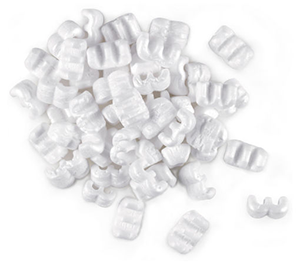
Expanded polystyrene chips
If we detect empty spaces of irregular morphology inside the boxes, we will opt for EPS chips as packaging filler, as these particles will contribute to compact the contents of the package and prevent undesired displacements. They are an excellent complement for shipping fragile products that are also protected with bubble wrap in rolls or bags.
When your product is particularly delicate, filler chips are a low-cost, original and aesthetically appealing solution for additional security. However, they are also susceptible to an image that is far from environmentally conscious.
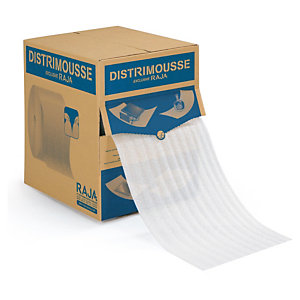
Polyethylene foam protection
In our comparison of bubble wrap and foam foam as shipment protection, we noted that although bubble wrap is a popular and very effective solution for fragile products, when these have polished or shiny surfaces (e.g. a mirror or a marble object) it is better to opt for foam film or foam bags.
Bubble wrap can leave marks on delicate surfaces, whereas foam packing padding is much gentler and gentler. On the other hand, foam padding is available in a variety of forms: in bags, sheets and rolls.
Innovative packaging padding materials
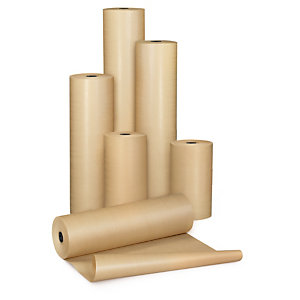
Kraft paper
Corrugated cardboard and kraft paper have a shock-absorbing effect during transport. Both types of packaging fillers prevent products from moving, but are suitable for less fragile products than those referred to in the section on bubble wrap. In fact, kraft paper is the most common packaging filler in cosmetics, parapharmacy and perfumery online shops because of its versatility in filling gaps when the size, or shape, of each item is different.
Kraft paper offers a natural finish to shipments, as well as taking up little space in the warehouse and being recyclable and biodegradable. It is usually presented in roll format to be cut to size or in pre-cut sheets. It can also be customised with corporate colours or printed with logos and messages.
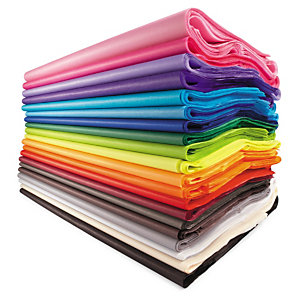
Tissue paper
Tissue paper provides a neat presentation of products, especially gift-wrapped products. Highly valued in the clothing, cosmetics and jewellery trades, tissue paper is available in sheets, white or coloured, and can be tailored to the brand’s communication standards – the star of a memorable unboxing!
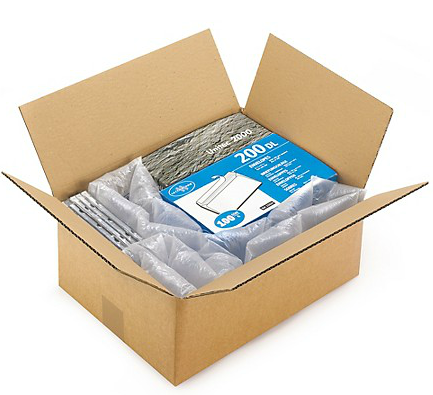
Air bags
Air bags are defined as ultra-light, modern and comfortable protection. Once inflated, they are, as their name suggests, 99% air, so they take up very little space both before use, in the warehouse packaging stock, and afterwards, when it comes time to dispose of them.
In reels, to be set up by machines and filler packaging systems, or in dispenser boxes, ready for immediate use, these air cushions have become one of the preferred options for online shops in recent years. One of the reasons for this is their ease of handling, as well as the tidiness and cleanliness perceived by the customer when opening the package, due to the transparency of the material from which the air cushions are made. They are also available in an EcoResponsible version, made from 20% recycled raw materials.
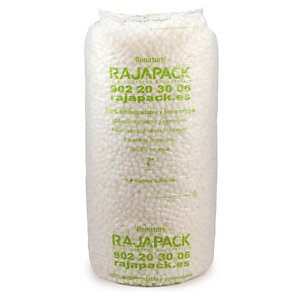
Filler particles made from corn starch
As an alternative to expanded polystyrene chips, filling particles based on corn starch take over as an equally effective but more environmentally friendly reference. Very spongy, suitable for fragile and delicate goods, they are 100% recyclable, biodegradable and compostable.
Packaging with built-in padding
To speed up order preparation even more, especially in businesses where packages are dispatched in more or less constant volumes, the RAJA® catalogue offers two-in-one solutions: packaging that combines the container (boxes, cases, bags, pouches, envelopes…) and the filler (bubble wrap, foam…) in a single product.
These packs with built-in fillers also allow you to achieve an elegant and sober arrangement of the contents with very little effort. Take a look at:
- Cardboard boxes and cases with foam protection. Prepared for total immobilisation of the products. There are references that add an anti-static film, ideal for packaging electronic items such as mobile phones, tablets, headphones, smart watches and bracelets, etc.
- Padded envelopes. For small, lightweight items, suitable for sending through the post office and to enable contactless delivery by dropping them in the recipient’s letterbox. The padding is made from bubble wrap or shredded paper, as in the case of the 100% paper Jiffy Green envelopes, the most EcoResponsible!
Stuffing machines for packaging
With paper, air and foam filling machines and systems, you can automate the protection of your products during packaging. If you are looking to optimise the preparation process of your orders, saving time and achieving a perfect presentation, this is your packaging filling solution.
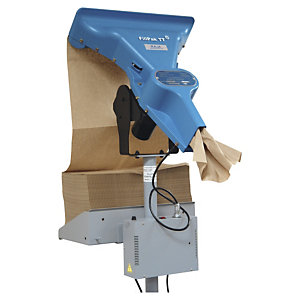
Paper filling machines
There are two types of machines that produce packaging fillers from paper:
- Paper filling machines for blocking empty spaces. These systems process paper by corrugating, hole punching, accordion folding or cutting to produce a voluminous cushioning that fills voids and cushions shocks.
- Paper filling machines for wrapping objects. They create a fluffy cover, with a honeycomb, honeycomb texture, which favours a very aesthetic, eye-catching and green-conscious presentation.
In this area, we would like to highlight our Geami WrapPak machine, which provides effective, original and environmentally friendly protection. You can see how it works in this video:
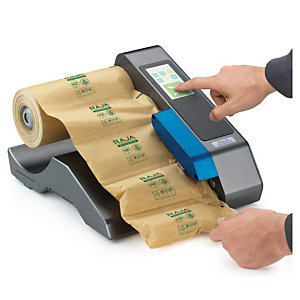
Air filling machines
Air-filled packaging machines automate the inflation of cushions with air chambers and bags which, in their initial presentation, arrive on reels or flat. These machines are usually modular, programmable and compact, making them easy to integrate into a packaging station.
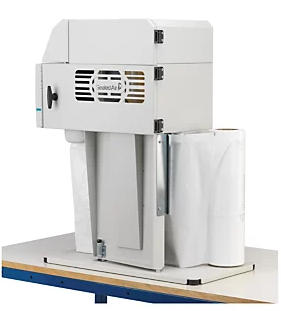
Foam filling machines
Machines that produce packaging filler from expanded foam create an adaptable covering that surrounds the objects, retaining them and eliminating the vacuum in the packages. It is also non-marking, making it ideal for use with shiny surfaces, mirrors or electronics.
How to reinforce the protection provided by packaging filler?
Choosing the right type of packing padding is very important… but it’s not everything! Keeping a few additional tips in mind will help you to further enhance the protection of your products:
- For boxes and cases, choose those made from the most suitable type of packaging board. Pay particular attention to the thickness: single-flute corrugated board is recommended for light shipments and more robust goods, while double and triple-flute is reserved for fragile or heavy products, long distances and export.
- Add foam or cardboard profiles and corner pieces to preserve the corners and edges of frames, furniture, etc. Any impact on such items can cause nicks and chips.
- Properly seal packages with adhesive tape. There are different types of packaging tape available, in polypropylene or kraft, reinforced, coloured or silent. You can also opt for personalised adhesive tapes to boost your brand communication. In any case, we suggest you learn more about how to apply them in our post on closing systems for cardboard boxes.
- Use strapping to make it difficult for your shipments to be opened unwanted. This way, no one will be able to check the contents or remove anything without the help of a pair of scissors or a box cutter.
If protecting the environment is one of your main concerns, remember that within the different types of packaging fillers there are ecological protection references, specially designed to minimise the impact that this waste of materials has on the environment.
Do you want to learn more about how to properly protect your shipments? Download the Packaging White Paper with everything you need to know about packaging… and much more! Just click here:












